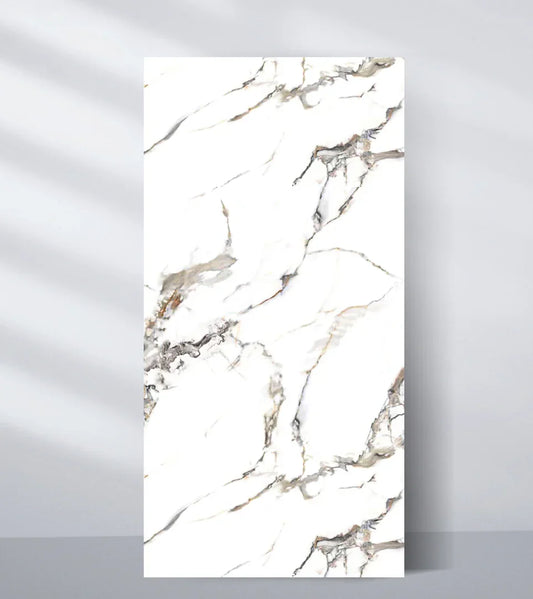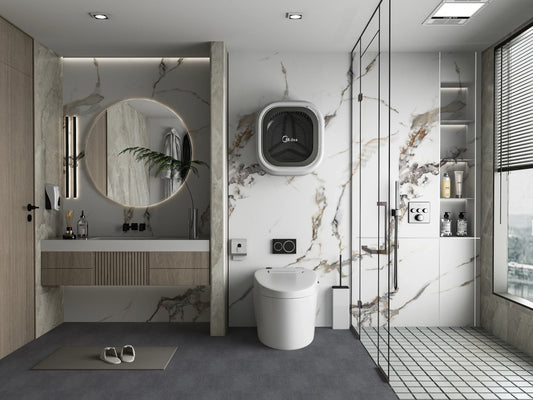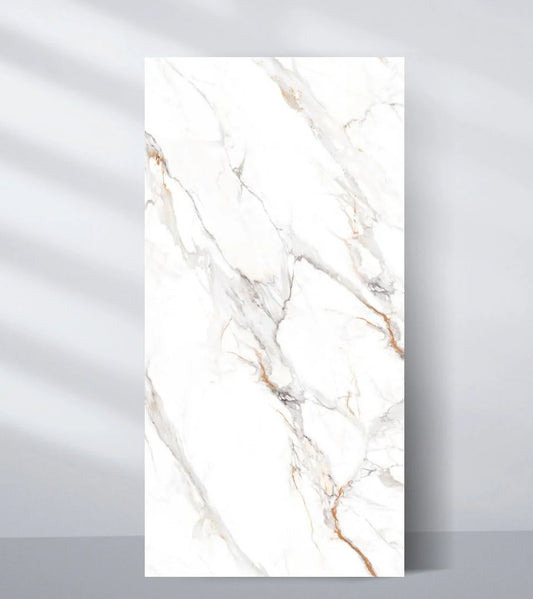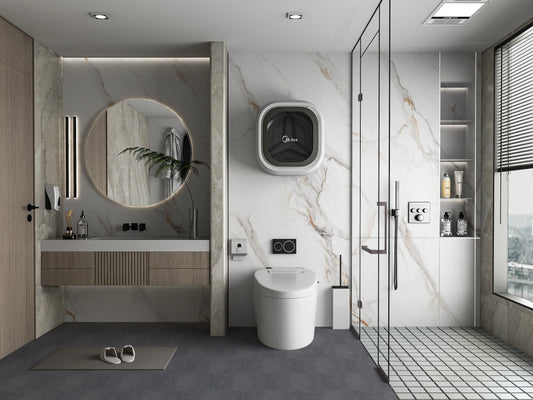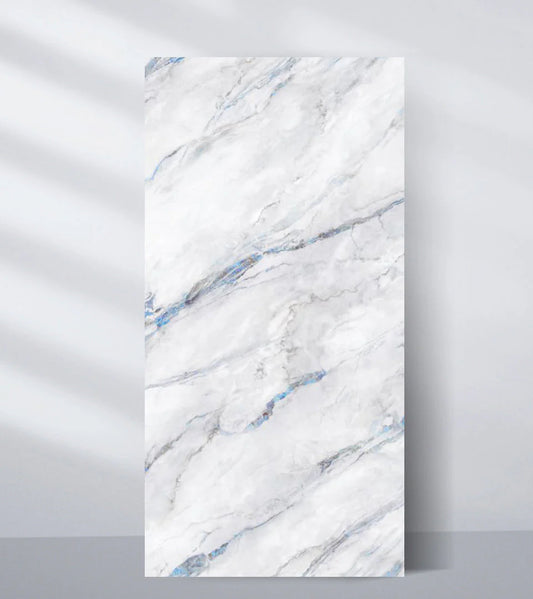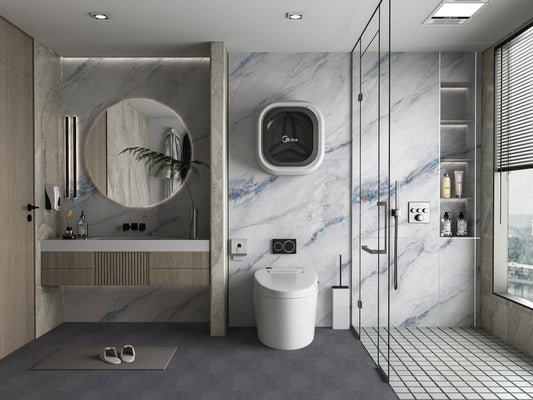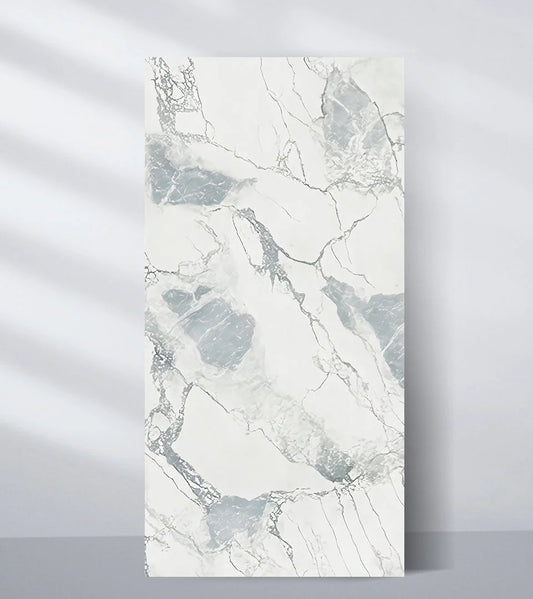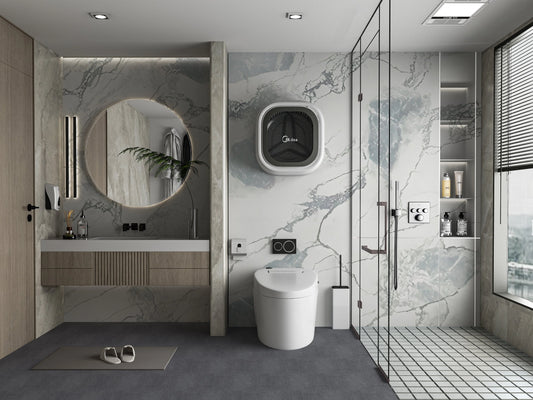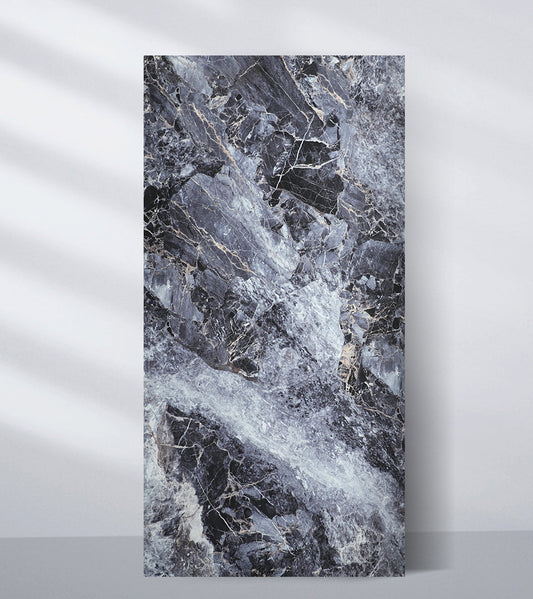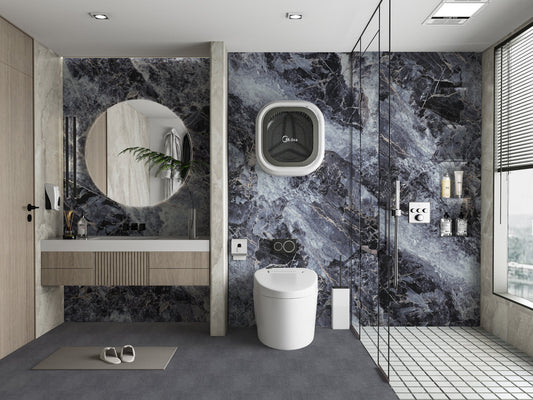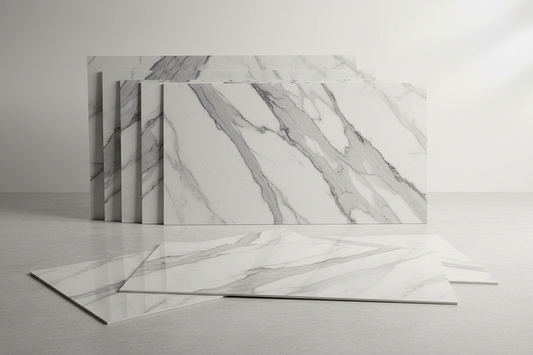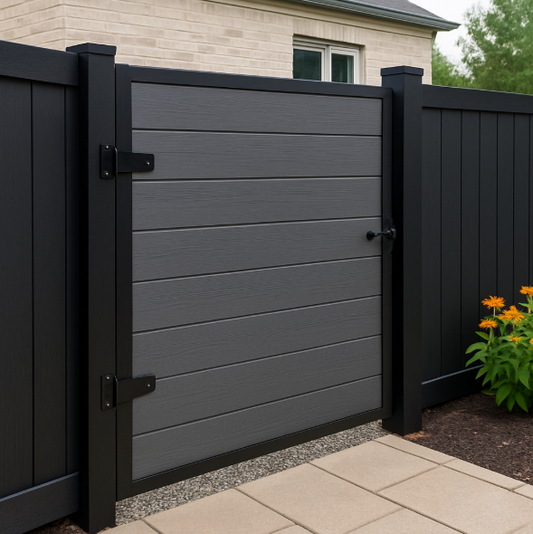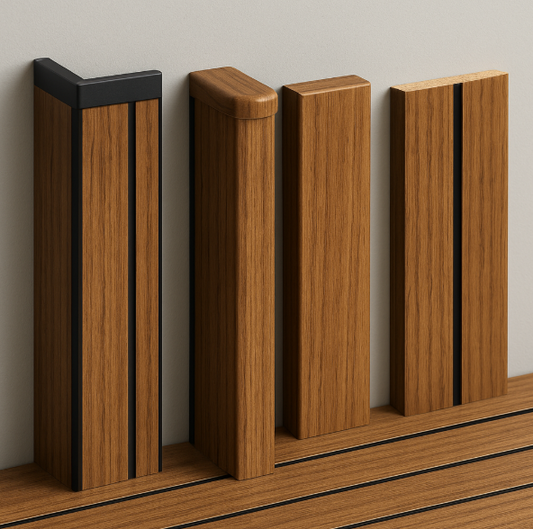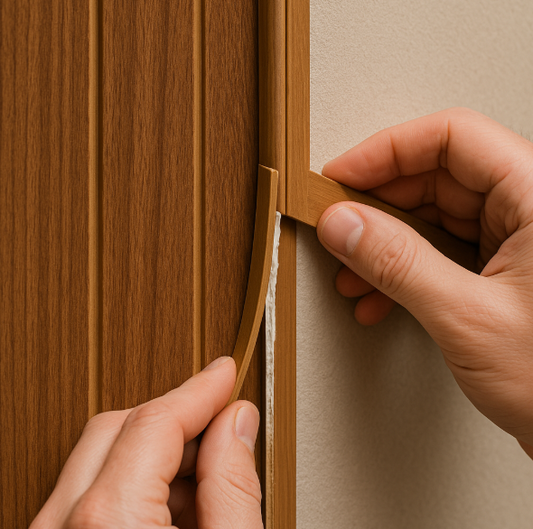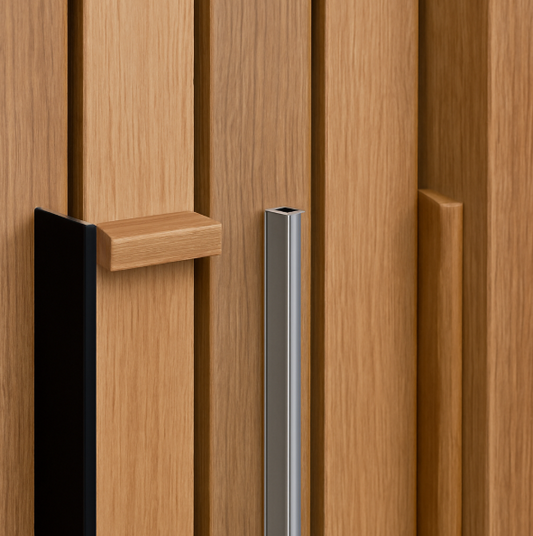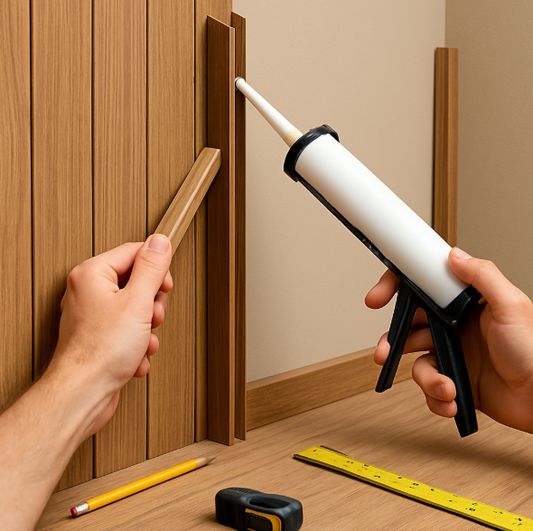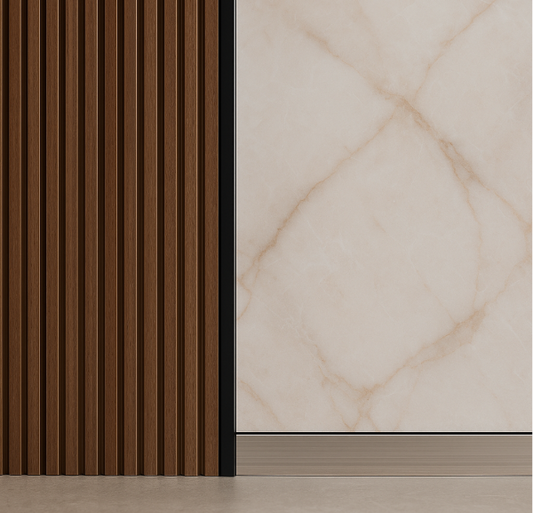When it comes to interior design and wall panel installation, selecting the right wall panels is only half the journey. The other, often overlooked component that can dramatically impact the final look and durability of your walls is the trim. Whether you are working with WPC wall panels or PVC wall panels, the trim you choose plays a crucial role in delivering a seamless, stylish, and long-lasting result. Understanding how to choose the appropriate trim not only ensures visual cohesion but also protects the paneling from wear, moisture, and imperfections.
Understanding the Function of Wall Panel Trims
Wall panel trims are more than just finishing accessories. They serve both a protective and aesthetic purpose. For WPC and PVC wall panels, trims help frame the panels neatly, hide raw edges, fill gaps between joints, and provide smooth transitions around corners, doors, ceilings, and floors. In high-end interior design, trims offer the finishing touch that separates a basic installation from a luxury feature wall. With the growing popularity of decorative wall paneling, especially wood-plastic composite (WPC) and polyvinyl chloride (PVC) materials, the demand for matching, moisture-resistant, and visually appealing trims has also increased.
Matching Trim Type with Panel Material
The first step in choosing the right trim is understanding the material compatibility. WPC panels, made from a blend of wood fibers and plastic, pair best with trims that offer similar durability and finish. Composite trims or aluminum edge trims are commonly used with WPC panels as they resist moisture, UV exposure, and impact making them ideal for living rooms, hallways, or even semi-outdoor areas. For PVC wall panels, which are popular in bathrooms, kitchens, and commercial interiors due to their water resistance, you’ll want to choose trims made of PVC or aluminum. These materials are easy to clean, resistant to rust, and maintain their shape and color over time. Avoid mismatched trim materials that may expand or contract at different rates, leading to gaps or misalignments.
Choosing Based on Installation Area
Where you install the wall panels plays a major role in determining which trims to use. In dry areas such as bedrooms, lounges, or offices, a wide variety of trim materials can be used including decorative finishes that prioritize aesthetics. In contrast, for humid or wet environments like bathrooms or kitchen backsplashes, waterproof trims such as PVC or powder-coated aluminum are essential. These trims prevent moisture from seeping behind the panels and reduce the risk of mold, mildew, or delamination. Additionally, areas with high foot traffic or external exposure may require stronger, more impact-resistant trims to protect panel edges from chips or scratches. Matching the trim’s durability with the functional needs of the space is key to maintaining the wall panel’s appearance and longevity.
 |
 |
Considering Design and Color Coordination
While the function of a trim is important, design consistency is just as vital in interior decor. A poorly chosen trim can disrupt the entire visual flow of your wall panels. Trims are available in a variety of finishes from matte black and brushed aluminum to woodgrain and glossy white. If your WPC panels have a textured or wood-look finish, opt for trims that blend naturally or contrast with intention. For example, using black L-trims on light oak fluted panels creates a bold, modern look, while white trims with marble-look PVC panels give a clean, contemporary vibe. Pay attention to the color temperature and reflectivity. Matching warm tones with cool metallics can work in modern interiors,but may clash in traditional or rustic spaces. The goal is to create harmony between the panel and the trim without drawing too much attention to the border itself.
Understanding Trim Profiles and Their Purposes
Another crucial consideration is the trim profile. Each type of trim is designed for a specific purpose and using the wrong profile can lead to installation issues. L-trims are commonly used for external corners and visible edges, offering a sharp, professional boundary. T-trims are ideal for joining two panels side by side and ensuring continuity across long walls or ceilings. End caps provide a neat closure on panel sides that aren’t against another surface. For inside or outside corners, specialized corner trims help bridge the panels without leaving awkward gaps or needing filler. U-trims and J-trims are commonly used in PVC panel installations to hold the panels in place at the top or bottom edges. Understanding how each profile functions will help you determine where and when to use them for the most refined result.
Factoring in Trim Dimensions and Thickness
WPC and PVC panels come in various thicknesses, typically ranging from 6mm to 12mm or more. Trims must match the panel thickness precisely to avoid loose fitting or bulging at the seams. Using a trim designed for thinner panels on thicker boards can result in improper alignment and visible gaps, which can affect both appearance and function. Always check the product specifications and trim slot dimensions before purchase. Many reputable suppliers offer compatible trim kits with their panel systems, which can help simplify the selection process. For panels with deeper textures or fluted surfaces, make sure the trim’s edge can accommodate the depth without distorting the design.
 |
 |
Trim Installation and Maintenance Considerations
Ease of installation and maintenance should also influence your trim choice. Some trims are designed for easy snap-in installation, while others may require adhesive or screws. For DIY users, pre-cut and pre-finished trims are easier to work with and save time. In terms of maintenance, choose materials that are easy to wipe clean and resist fading or discoloration. This is particularly important in kitchens and commercial spaces where hygiene and long-term appearance matter. Trims with UV-resistant coatings or water-sealed finishes offer longer durability and less frequent upkeep. A well-chosen trim will not only complement your paneling during installation but also maintain its beauty for years to come.
Trusting Quality Trims from Reliable Sources
To ensure your investment in wall panels pays off, it’s important to buy trims from trusted suppliers that specialize in interior wall design materials. Reputable manufacturers often design trims that perfectly match their wall panel collections in terms of color, texture, and fit. At Wall Decor, we offer a premium selection of composite, aluminum, and PVC wall trims designed to work seamlessly with WPC fluted panels and PVC marble wall panels. Our trims are engineered for precision, style, and durability, ensuring every installation looks as beautiful as it performs.
Final Thoughts
Choosing the right trim for your WPC or PVC wall panels is an essential step that directly affects the outcome of your wall paneling project. From material compatibility and installation area to trim type, design, and dimension each factor must be carefully considered to achieve a flawless interior finish. With the right trims, your panels will look complete, polished, and built to last.
Whether you're renovating a single feature wall or designing an entire commercial space, trims provide the finishing framework that turns raw panels into refined architectural elements. Take the time to select trims that meet both your aesthetic goals and functional needs and you’ll experience the full impact of quality wall paneling.
Explore Premium Trims for Wall Panels
Shop now at Wall Decor’s Trims & Accessories Collection for the perfect finish to your WPC or PVC wall installations.

